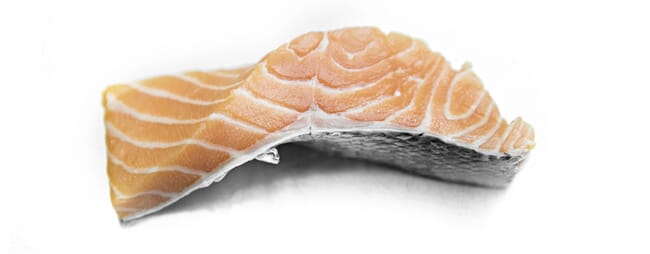While fast growth rates are one of the main goals in commercial salmon aquaculture, texture is an important consumer concern and insufficient firmness can cause downgrading. As a result, a team of researchers led by scientists from Akvaplan-niva in Iceland, has looked into the interactive effects of temperature and photoperiod on growth rates and flesh quality in Atlantic salmon post‐smolts.

© Jon Are Berg Jacobsen, Nofima
In the trial, juvenile salmon, averaging 96g, were reared at six different combinations of temperatures (4.3, 6.5 or 9.3°C) and photoperiods (continuous light or simulated natural photoperiod). At termination of the trial, the fish were slaughtered and flesh samples taken to investigate quality and textural properties in the different experimental groups.
The final weight in the six experimental groups varied between 174 and 345g and the softer texture was seen in the fast-growing groups.
The researchers concluded that: “Photoperiod has only minor effects on flesh quality and textural properties, whereas temperature had significant impact on most of the measured variables. Although positive for growth, higher temperatures might be less favourable in relation to softer muscle tissue.”
As a result, they added: “The present findings indicate that slaughter of salmon should be avoided in periods of high growth”.
To read the full report, which was published as ‘Flesh quality of Atlantic salmon smolts reared at different temperatures and photoperiods’, in Aquaculture Research, click here.



